Since time immemorial, woodworkers have used pine logs to craft a wide array of wooden items such as furniture, cabins, barns, and lodges, to name but a few. Carpenters favor this type of wood since it is easy to use, readily available, and is a sustainable resource. Moreover, it is among the cheapest wood types on the market.
Given that pine is natural wood, it is prone to decay and structural damage caused by exposure to natural elements. Therefore, the wood should be treated accordingly for outdoor use. More worrying is the fact that pine logs have unevenly distributed pores which make it difficult to attain an even finish.
Below are some effective treatment strategies designed to help you circumvent this issue and effectively finish your pine logs for added stability.
Is Pine a Good Wood for Outdoors Use?
Pine is the most affordable and readily available softwood in the market. It also provides a rustic appeal that adds aesthetics to outdoor furniture.
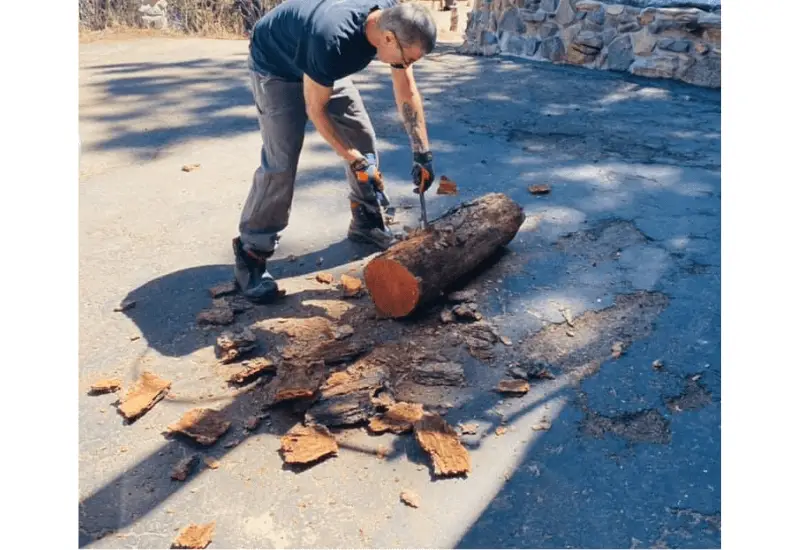
However, pine is the least durable softwood compared to other common outdoor wood varieties, such as cedar and redwood. It does not have sufficient natural stability to withstand outdoor elements such as humidity and sunlight.
If left untreated, pine experiences gradual wood movements, which cause the wood to warp, split, crack, or check. For this reason, pressure-treated pine logs are better suited for outdoor use than natural pine logs.
Inspect Your Pine Logs
Before commencing your pine treatment process, it is prudent to inspect the logs thoroughly. These items often accumulate dust, insects, or fungi when left in outdoor storage units.
Those stored indoors are also exposed to damaging elements such as heat build-up, grease, or smoke. Inspecting the logs beforehand allows you to eliminate these impurities for a more effective treatment. Use a long broom or vacuum to dust the logs.
Inspecting is also important as it helps determine whether the logs were treated before purchase. Most wood merchants use oil to seal pine logs. In such cases, use a commercial polish and a soft fabric to wipe off the oil.
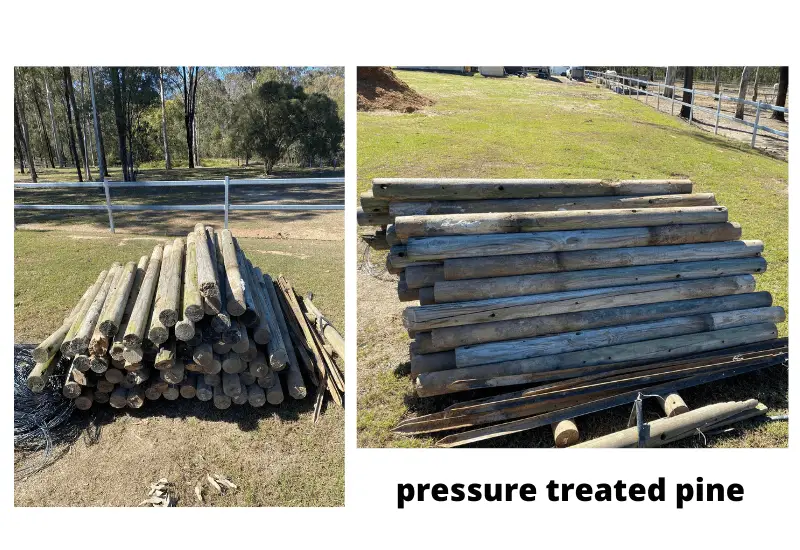
You can also use organic cedar, lemon, or orange oil to wipe off the oil and return the pine log to its natural glory. For pine logs coated using top film sealers or varnish, use water and compostable degreaser soap to wash away the coating. Also, allow the pine logs ample time to air dry before treating.
Using Paint to Treat Pine Logs
First, gently sand down the entire log’s surface in a circular motion using fine-grit sandpaper and wipe away the wood shavings with a damp cloth.
Next, evenly apply a thin layer of primer and cover it with at least three coats of paint. Each coat will take 2-3 hours to dry. To get a glossy and stable finish, conclude this procedure by applying the paint’s sealant to the wood surface.
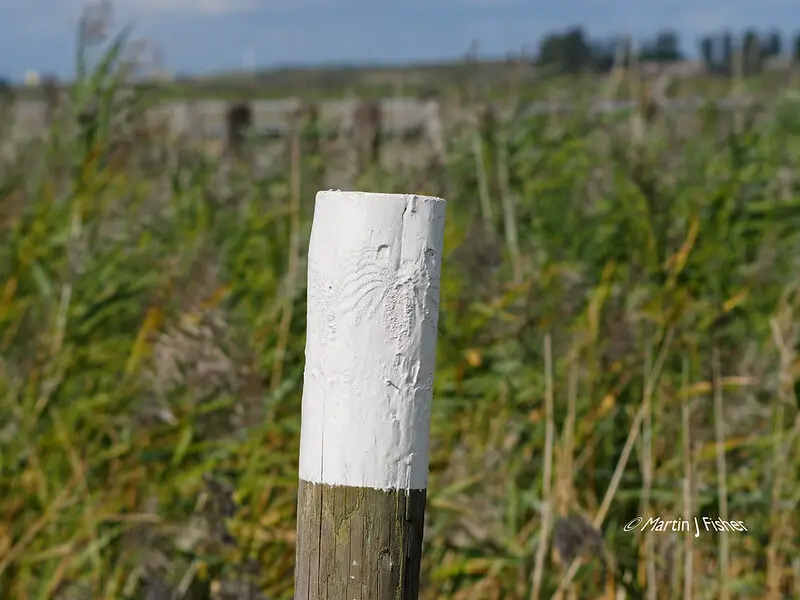
Unlike other finishes, pine’s unevenly distributed pores do not affect paint. We mentioned in our exterior wood treatment write-up that paint obscures wood grains. While this is a disadvantage for some wood types, it is advantageous for pine since paint color evens the shading difference between pores and the spaces between them.
Using Polyurethane to Treat Wood Logs
Polyurethane is another excellent finish for pine logs. Start by applying sealant consisting of 2 parts poly and 1 part mineral spirits.
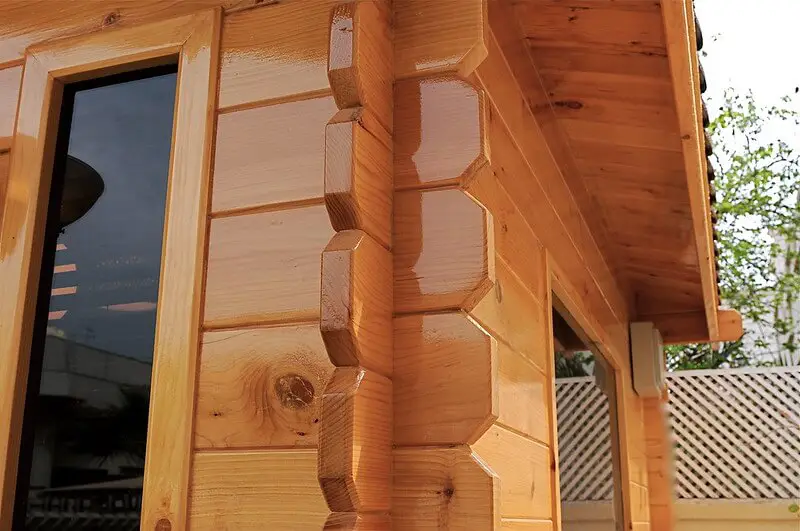
After 24 hours, apply three coats of undiluted poly to the wood’s surface, giving each 24 hours to dry properly before applying the next. To remove the splotches likely to form due to pine’s uneven pores, use 400-grit sandpaper to gently sand them down and wipe the shavings off with a damp fabric.
Stain + Varnish
If you don’t fancy the plain color of pine before applying your poly you can stain the pine wood. Staining alone is not enough protection for wood in the outdoors therefore, a top coat of poly or varnish will extend the stained wood’s longevity. For more information on staining pine, read our review of the best pine stains.
Conclusion
By and large, pine logs are a sustainable source of good woodworking material. However, treating them, especially outdoor logs, is important for added stability and durability. Applying an appropriate wood finish enables pine logs to resist natural elements aptly. You can use paint, polyurethane, or if you prefer staining, then apply poly over the stain. All these are remarkable ways to protect pine logs for outdoor use.

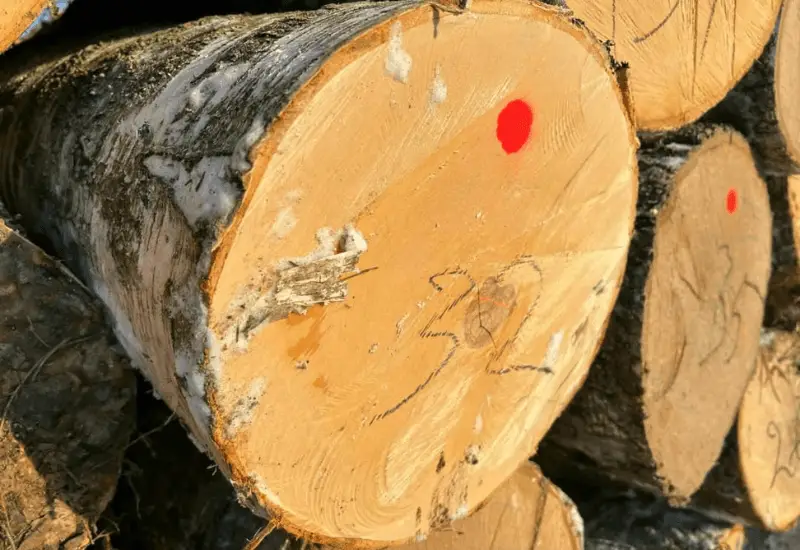
Thanks for pointing out that pine logs must be inspected thoroughly since they accumulate insects, dust, or fungi. This is a good tip for my aunt who is interested in finding a supplier of treated logs that can be used to build her dream log house next summer. It will make sense to her to have all the logs that she will order inspected properly.
You’re welcome! I’m glad you found the tip about inspecting pine logs helpful for your aunt’s log house project. Indeed, when using pine logs for construction, it’s important to ensure they are properly treated and inspected to minimize the risk of insects, dust, or fungi causing issues in the future.